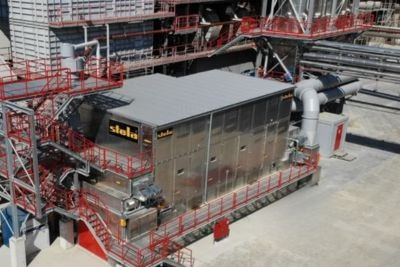
by STELA Insights | May 5, 2025 | Case Study, Case Study BT, Cement Production Energy Saving, Green Manufacturing Processes, Industrial Energy Efficiency, Low Temperature Belt Drying
Challenge: The SCHWENK cement plant in Allmendingen prioritized the efficient utilization of previously unused waste heat from the production process. Recovering this thermal energy – which would otherwise dissipate into the environment – offered a unique...

by STELA Insights | Nov 26, 2024 | Belt Drying Efficiency, News, Renewable Energy and Fuels, Sustainable Drying Techniques
Low-temperature drying is a sustainable and future-proof solution for Greenfield projects, offering numerous benefits in terms of energy efficiency, product quality, environmental impact, and cost savings. As industries like pellet production, biofuels, alternative...

by STELA Insights | Nov 26, 2024 | Case Study, Case Study BT, Low Temperature Drying Benefits, Renewable Energy and Fuels
Challenge: Acon Timber faced a complex challenge in establishing a state-of-the-art sawmill in a tropical region. Designed to process sawdust, wood shavings, and wood chips into pellets with an annual capacity of 132,000 tons, the facility had to contend with extreme...

by STELA Insights | Sep 6, 2024 | Biofuel, Carbon Footprint Reduction, Low Temperature Belt Drying, News, Renewable Energy and Fuels, Waste Heat Utilization
As the aviation industry embraces the shift toward sustainability, Sustainable Aviation Fuel (SAF), a type of biofuel, has emerged as a critical component in reducing carbon emissions. With SAF offering up to an 80% reduction in lifecycle carbon emissions compared to...

by STELA Insights | Jul 25, 2024 | Biofuel, Low Temperature Belt Drying, Low Temperature Drying Benefits, News, Renewable Energy and Fuels, Sustainable Drying Techniques, Waste Heat Utilization
The demand for renewable fuels, particularly biofuels, is experiencing steady growth. The biofuel market is expected to reach $200 billion by 2030. This presents a significant opportunity for producers, but also a crucial question: how can production be optimized for...






